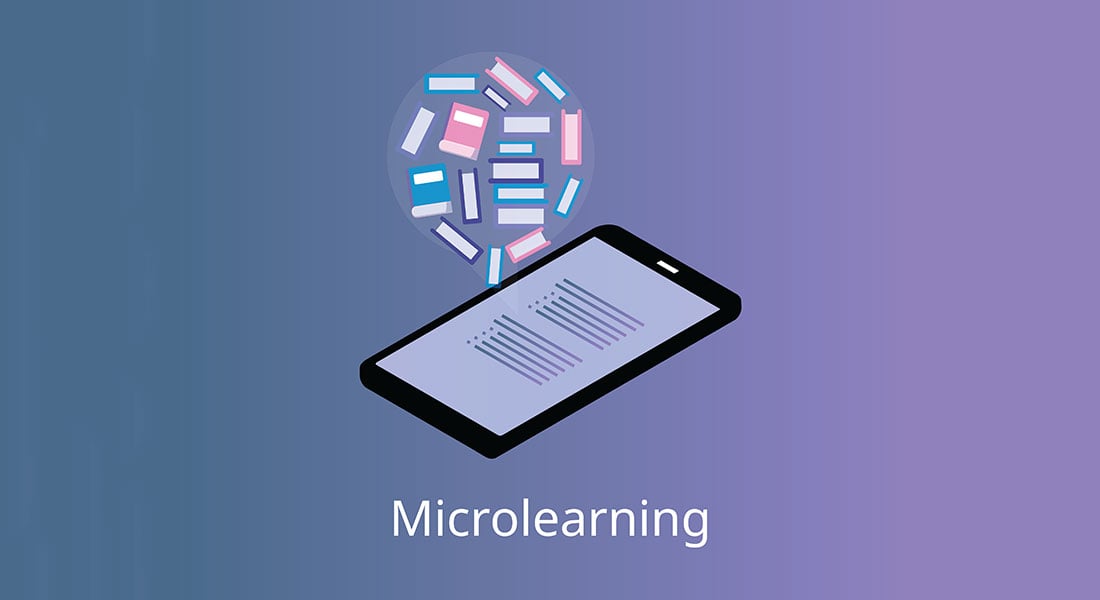Microlearning for New Training Managers — The What, Why, How, and More

Microlearning is a modern training approach that focuses on delivering bite-sized, easily digestible content to learners. These modules are designed to target specific learning objectives and deliver information in a concise and easily consumable format. Microlearning can take various forms, such as videos, infographics, quizzes, or interactive simulations. It's particularly effective for new training managers who need to quickly grasp essential concepts and skills. Here's a breakdown of what microlearning is, why it's beneficial, how to implement it, and more.
Wondering Why New Training Managers Should Prefer Microlearning?
Here are a few aspects where it benefits them -
- Engagement
- Retention
- Flexibility
- Cost-effectiveness
- Performance support
Read on to check out the best practices to implement microlearning.
Why New Training Managers Should Bet on Microlearning
- Engagement - Short and focused content is more engaging because it fits into busy schedules and doesn't overwhelm learners. Interactive elements such as quizzes, challenges, or gamification can make learning more fun and engaging.
- Retention - Cognitive load is reduced since learners are presented with small, manageable chunks of information. Focused content is more likely to be retained and applied on the job as frequent, spaced repetitions of microlearning content enhance memory and long-term retention.
- Flexibility - Learners can access microlearning modules anytime and anywhere, using various devices, which promotes self-paced learning. The flexibility of microlearning allows new training managers to learn at their own convenience, aligning with their work responsibilities.
- Cost-Effectiveness - Producing microlearning content can be more cost-effective than creating comprehensive, lengthy courses. It's easier and quicker to update and maintain microlearning materials, saving time and resources.
- Performance Support - Microlearning can serve as a just-in-time resource, providing quick solutions or guidance when training managers encounter challenges on the job. It supports continuous learning and helps new managers keep up with evolving roles and responsibilities.

→ Download Infographic Now: Microlearning to Skyrocket Your Corporate Training Initiatives
How to Implement Microlearning
Start by defining the specific skills, knowledge, and competencies new training managers need to excel in their roles. Consider involving experienced trainers or managers to identify crucial learning objectives. Break down learning objectives into small, discrete modules. Each module should focus on one specific topic or skill. Develop content in various formats, including short videos, infographics, PDFs, interactive scenarios, or podcasts.

Recognize that people have different learning preferences. Offer content in multiple formats to cater to various learning styles. For example, use video for visual learners, quizzes for active recall, and podcasts for auditory learners. Ensure that microlearning content is accessible on different devices (mobile, tablet, desktop) and platforms (e.g., Learning Management Systems). Optimize content for easy navigation and viewing on different screen sizes.
Use Storytelling, real-life scenarios, and interactive elements like questions or branching scenarios to make the content engaging. Encourage active participation and critical thinking rather than passive consumption. Include quizzes or knowledge checks at the end of each microlearning module to evaluate learners' understanding. Assessments provide feedback to learners and allow you to track their progress. Gather feedback from learners on the effectiveness and relevance of microlearning modules.
Analyze data on completion rates, assessment scores, and engagement metrics to identify areas for improvement. Integrate microlearning seamlessly into your overall training strategy. Ensure that it complements other training methods, such as workshops, mentoring, or on-the-job training.
Best Practices for New Training Managers
1. Target Specific Goals
Begin by identifying the precise skills, knowledge, or competencies that new training managers need. For example, you might specify that they need to understand effective feedback techniques or be proficient in using training software. Ensure that these learning objectives align with broader business goals, such as improved training program efficiency, higher Employee Retention, or enhanced on-the-job performance.
2. Short and Concise
The essence of microlearning is brevity. Modules should typically be no longer than a few minutes to maintain learner engagement. For instance, a video module might be 3-5 minutes in length. Within this short timeframe, focus on teaching one concept, skill, or task. Avoid overloading learners with too much information in one module. For example, here’s a microlearning video to help you understand what microlearning videos are and how to create them, check it out!
3. Relevance
Microlearning should directly address the practical aspects of the new training manager's role. Develop content that helps them perform their job more effectively, such as creating onboarding materials or conducting performance evaluations. Use real-world scenarios and case studies to illustrate how the knowledge or skills presented in the module can be applied to address common challenges in their role.
4. Interactivity
Incorporate interactive elements to maintain learner engagement. Examples include multiple-choice questions, drag-and-drop exercises, or decision-making scenarios. Encourage active participation and critical thinking rather than passive consumption. For instance, use scenario-based questions that require learners to make decisions and receive feedback.
5. Personalization
Allow learners to choose modules based on their individual needs and preferences. Provide a library of microlearning content so they can tailor their learning journey. Implement adaptive learning systems that recommend specific modules based on a learner's progress, performance, and areas where they need improvement.
6. Continuous Improvement
Microlearning content should not be static. Continuously update and improve the modules to reflect changes in best practices, feedback from learners, or evolving industry standards. Use an iterative design approach, where you gather feedback from learners and stakeholders, make improvements based on that feedback, and release updated versions of modules to keep content fresh and relevant.
Wrapping Up!
In summary, microlearning is a highly effective strategy for equipping new training managers with the knowledge and skills they need to excel in their roles. Its capacity to deliver concise, engaging content that is readily accessible and cost-effective makes it an ideal choice for busy professionals seeking targeted training. When implemented with the best practices mentioned above, microlearning becomes a valuable asset in the training manager's toolbox, promoting learning retention and facilitating on-the-job performance.


![Microlearning — How to Leverage it for Macro Results [Infographic]](https://no-cache.hubspot.com/cta/default/59327/16407642-6662-4ba8-882c-72f2b0b9f493.png)


